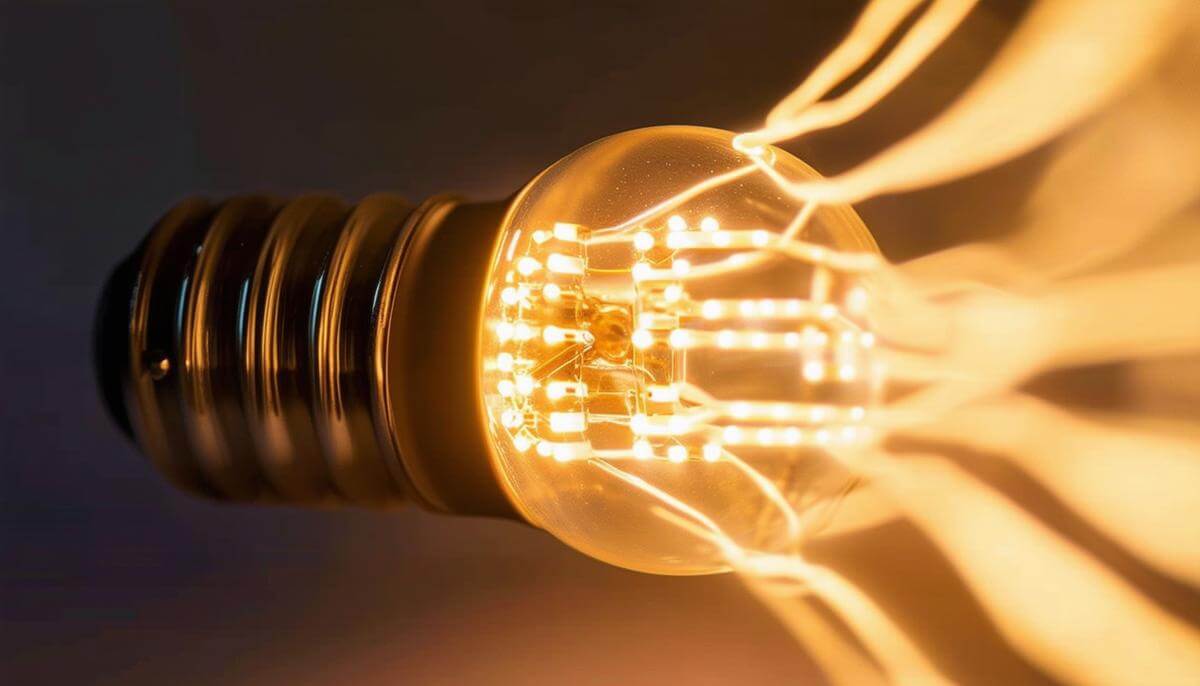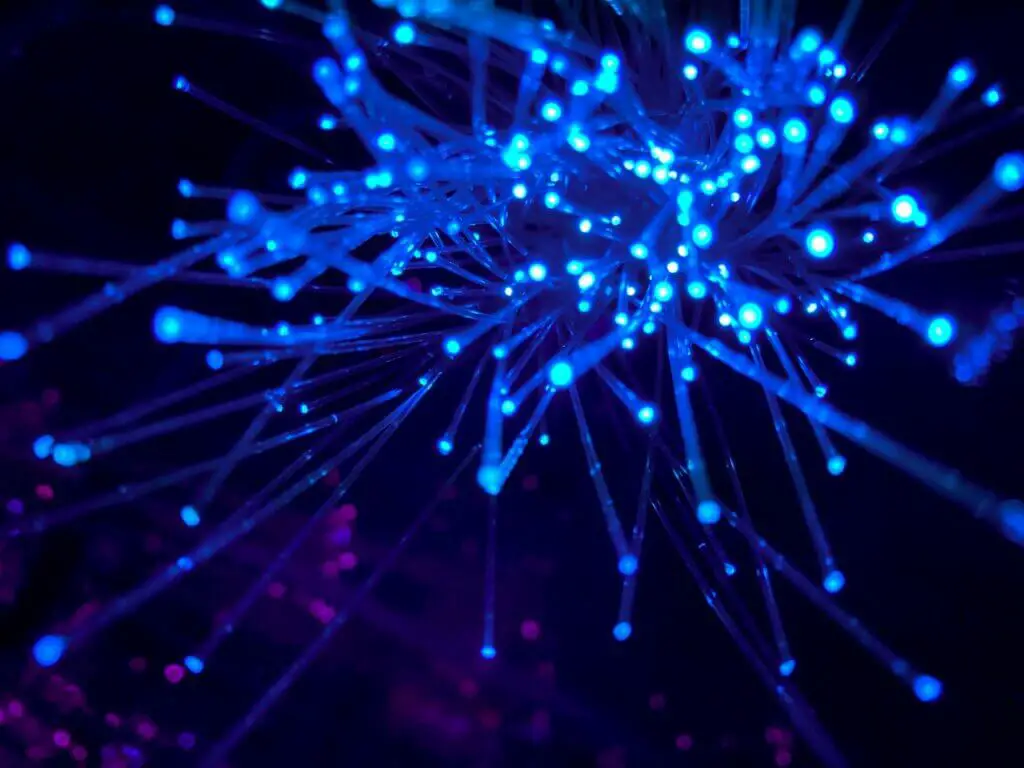We may earn money or products from the companies mentioned in this post.
LiFi: A Revolutionary Future Technology
The Fundamentals of LiFi
LiFi, or Light Fidelity, is a wireless communication technology that utilizes visible light instead of traditional radio waves. It operates by modulating LEDs at ultra-high speeds, imperceptible to the human eye, to transmit data. A receiver, typically a photodiode, catches these rapid light changes and converts them into an electrical signal, which is then decoded back into binary data. One of the primary advantages of LiFi is its vast bandwidth. The visible light spectrum ranges from approximately 400 THz(Terahertz) to 800 THz, significantly larger than the radio frequency range used by Wi-Fi. This extensive bandwidth translates to potentially higher data transfer speeds, with tests showing LiFi can reach speeds of over 1 gigabit per second.
In addition to speed, LiFi offers inherent security benefits. Because light does not pass through walls, the signal is confined within the boundaries of a room, making it more difficult for unauthorized access. This characteristic makes it particularly appealing for environments that require heightened data security. LiFi’s reliance on line of sight also presents limitations. It cannot operate without a clear path between the LED source and the receiving device, meaning it may not be suitable as a standalone replacement for Wi-Fi in all scenarios. Instead, LiFi is often viewed as a complementary technology that can supplement Wi-Fi in specific use cases.

Comparative Analysis: LiFi vs. Wi-Fi
When comparing the two wireless technologies, it is essential to consider their unique strengths and limitations.
Speed
LiFi has the potential to outperform Wi-Fi, with theoretical maximum speeds reaching up to 100 Gbps compared to Wi-Fi 6’s 9.6 Gbps. This advantage can be particularly beneficial in data-heavy applications, such as virtual reality or ultra-high-definition video streaming.
Security
Due to its reliance on visible light, LiFi’s signal is naturally confined within the boundaries of a room, reducing the risk of unauthorized access. In contrast, Wi-Fi’s radio waves can penetrate walls, making them more susceptible to interception and requiring robust encryption protocols.
Range and Coverage
Modern Wi-Fi routers can cover distances up to approximately 32 meters indoors, suitable for most residential and office environments. LiFi, on the other hand, is generally limited to around 10 meters from the light source, potentially requiring multiple access points for comprehensive coverage.
Interference
In dense environments with multiple Wi-Fi networks, interference can lead to dropped connections and slower speeds. LiFi, using light for data transmission, does not compete with radio frequencies and maintains stable performance even in busy areas.
Ultimately, LiFi and Wi-Fi are best viewed as complementary technologies. Wi-Fi’s ability to pass through walls and cover larger areas makes it indispensable for broader applications, while LiFi can enhance networks by offloading traffic in data-heavy or secure settings.

Prospective Applications and Industry Impact
The potential applications of LiFi span across various industries, each benefiting from its unique capabilities.
- Healthcare: LiFi’s data security and high-speed transmission can be crucial for handling sensitive patient information, medical imaging, and telemedicine services. Hospitals can utilize LiFi for secure communication in operating rooms or patient wards, minimizing interference with medical equipment.
- Automotive Sector: LiFi can revolutionize vehicle-to-vehicle (V2V) and vehicle-to-infrastructure (V2I) communication. LiFi-equipped headlights and taillights can share real-time data about traffic conditions, hazards, or vehicle status, enhancing safety features and enabling more robust autonomous driving systems. LiFi can also facilitate high-speed in-car entertainment systems without relying on traditional mobile networks.
- Underwater Communication: LiFi, utilizing light waves, can penetrate water more effectively than traditional radio waves, providing a reliable medium for underwater data transmission. This capability is crucial for various marine applications, from scientific research to enhancing communication between submersibles.
- Industrial Settings: LiFi can offer a resilient, interference-free communication channel for the Internet of Things (IoT) in environments with electromagnetic interference from machinery and equipment. The high-speed data transfer capabilities of LiFi can support the increasing data demands of smart factories and automation.
LiFi’s role in complementing existing Wi-Fi networks is significant. In environments experiencing high congestion or interference, such as concert venues, conference centers, or stadiums, LiFi can alleviate the load on Wi-Fi networks, ensuring consistent connectivity for attendees. As the IoT ecosystem expands, LiFi can address the specific needs of various segments by providing high-speed data transmission, reducing latency, and improving overall network performance, especially in scenarios where interference is a critical concern.

Current Limitations
While LiFi holds immense potential, it is essential to acknowledge its current limitations. The reliance on line of sight is a primary constraint, as walls, furniture, and other obstacles can disrupt the signal. This limitation emphasizes its role as a complementary technology rather than a standalone solution. The relatively short range of LiFi, typically around 10 meters, necessitates the deployment of multiple access points to achieve comprehensive coverage in larger environments, potentially increasing costs. LiFi’s performance can also degrade under conditions of poor lighting or when LED light sources are significantly dimmed.
Despite these limitations, ongoing research and development efforts are promising. The recent approval of the IEEE 802.11bb standard marks a significant milestone in ensuring compatibility and interoperability between LiFi and existing Wi-Fi devices, encouraging manufacturers to develop LiFi-compatible hardware. Researchers are also working on enhancing the robustness of its signals through reflective surfaces and advanced signal processing techniques, allowing them to reach devices that are not in direct line of sight. Incorporating infrared light, which is less prone to ambient light interference, could extend the practical range of LiFi networks.
Future Developments
Future developments are likely to include hybrid systems that combine the strengths of both LiFi and Wi-Fi, utilizing Wi-Fi for broader coverage and LiFi for high-speed, secure data transfer in specific areas. Innovations in hardware, such as more efficient LED lights and advanced photodetectors, will play a crucial role in overcoming current limitations. Market adoption depends on user awareness and industry support. Companies like pureLiFi and Nav Wireless Technologies are spearheading efforts to commercialize the technology, and their success will be critical in driving broader adoption.
As the IoT continues to expand, LiFi’s potential to offer high-speed, interference-free connections makes it a valuable addition to the ecosystem. The coming years will be pivotal in determining how the technology evolves from a supplementary to a critical component of our connected world. LiFi stands out as a pivotal advancement in wireless communication, with the potential to provide high-speed, secure connections as a complement to existing technologies like Wi-Fi. As research and development efforts continue, and industry support grows, the integration of LiFi into our daily lives promises enhanced connectivity and a more efficient digital experience.
You Might Also Like – Cutting-Edge Military Laser Tech


